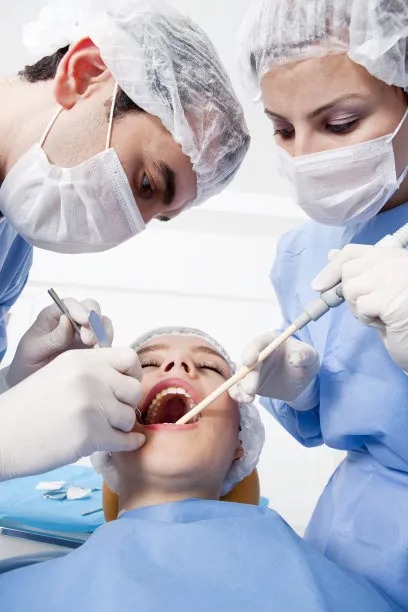The Essential Guide to Safely Extracting a Tooth at Home for Better Oral Health
Summary: Extracting a tooth at home can seem daunting, but with the right knowledge and preparation, it can enhance your oral health safely. This guide provides essential tips to help you decide whether to remove a tooth yourself, offering insights into the necessary tools, pre-extraction preparations, post-extraction care, and when to seek professional help. By understanding the process and taking precautions, you can minimize pain and complications, making tooth extraction at home a potentially viable option for certain situations. Remember, this is not a substitute for professional dental care, but it can serve as a helpful resource for those in need.
1. Assessing the Need for Tooth Extraction

Before considering tooth extraction at home, it’s crucial to assess whether its necessary. Common reasons for extraction include severe decay, infection, or overcrowding. Observe if the tooth is severely damaged and causing pain, which often signals the need for removal. Moreover, consider your overall dental health and whether a tooth removal aligns with your long-term oral health goals.
Consulting a dental professional, even if just for advice, is vital. A dentist can provide insights into your specific situation and suggest whether at-home extraction is a sensible option. If you do decide to undertake the procedure, ensure that your decision is based on a thorough understanding of the potential risks and outcomes.
Lastly, it’s also critical to consider alternatives to extraction. Sometimes, there are treatments available that might save the tooth, such as fillings or root canals, which can be less invasive and preferable.
2. Necessary Tools for Safe Extraction
Once youve decided that extracting a tooth at home is the right choice, gather the necessary tools. A clean pair of gloves is essential, as they prevent infection during the procedure. Additionally, youll need a pair of needle-nose pliers, which can provide a firm grip on the tooth. Ensure these tools are sterilized to minimize the risk of bacteria entering the socket.
Having gauze on hand is vital as well; it helps to control bleeding post-extraction. Ice packs can also be beneficial for managing swelling and discomfort. Having these items ready will streamline the process and increase safety and effectiveness.
Finally, it’s helpful to have pain relief medication available. Over-the-counter options can mitigate discomfort during and after the extraction, ensuring you have a smoother experience. Always follow the recommended dosages to avoid any adverse effects.
3. Pre-Extraction Preparations for Success
Preparation is key to a successful tooth extraction at home. Begin by ensuring you are in a clean environment, and eliminate distractions that can compromise focus. Consider laying down a clean towel or cloth to work on. This helps maintain cleanliness and makes cleanup easier.
Another aspect of preparation is discussing the procedure with someone close to you. Its ideal to have a friend or family member present, not only for moral support but also for assistance in case of unforeseen complications. They can help manage any potential emergency and provide comfort during the process.
Lastly, prepare mentally and physically. Make sure to eat a light meal before the procedure, and remain hydrated. However, avoid eating immediately before extraction to prevent any nausea. Mental preparedness can help reduce anxiety, making the entire process much smoother.
4. Post-Extraction Care and Recovery Tips
After successfully extracting a tooth at home, the focus shifts to recovery. Proper care post-extraction is crucial to prevent infection and ensure healing. Start by bite on gauze for at least 30 minutes to control bleeding, changing it as necessary. Avoid strenuous activities for the first 24 hours to promote healing.
Next, apply ice packs to the area to reduce swelling and discomfort. Alternate between 15 minutes on and off, ensuring that you’re not applying ice directly to the skin but wrapping it in a cloth. Over-the-counter pain relief can also aid in managing post-operative discomfort.
Lastly, keep the extraction site clean. After 24 hours, rinse gently with warm salt water to aid healing. Avoid using straws and smoking, as these can dislodge the blood clot and lead to complications. Follow these care tips diligently for a smooth recovery.
Summary:
This guide outlines significant aspects of safely extracting a tooth at home for better oral health. From assessing the necessity of extraction to post-extraction care, it provides a comprehensive walkthrough to ensure the best outcomes while minimizing risks. Understanding these factors can enhance your confidence in managing your oral health effectively.
This article is compiled by Vickong Dental and the content is for reference only.



